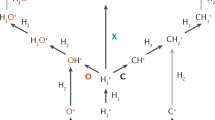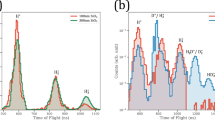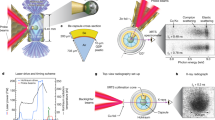Abstract
A SOUNDING rocket was launched recently from the Andöya range (69° 17′ N), chiefly to study the ion composition around the cold summer mesopause, and its relation to ambient temperature, ionization production and ionization loss rates. The most striking result was the large size of the water cluster ions detected and the extremely rapid change in the ion composition around 85 km. The rocket, a Nike Cajun launched on August 8, 1971, at 1211 GMT, reached an altitude of 98.6 km and carried the following experiments.
This is a preview of subscription content, access via your institution
Access options
Subscribe to this journal
Receive 51 print issues and online access
$199.00 per year
only $3.90 per issue
Buy this article
- Purchase on Springer Link
- Instant access to full article PDF
Prices may be subject to local taxes which are calculated during checkout
Similar content being viewed by others
References
Narcisi, R. S., and Bailey, A. D., J. Geophys. Res., 70, 3687 (1965).
Arnold, F., Kissel, J., Krankowsky, D., Wieder, H., and Zähringer, J., J. Atmosph. Terr. Phys., 33, 1169 (1971).
Folkestad, K., NDRE Report No. 59 (Norwegian Defence Research Establishment, Kjeller, 1970).
Author information
Authors and Affiliations
Rights and permissions
About this article
Cite this article
JOHANNESSEN, A., KRANKOWSKY, D., ARNOLD, F. et al. Physical Sciences: Detection of Water Cluster Ions at the High Latitude Summer Mesopause. Nature 235, 215–217 (1972). https://doi.org/10.1038/235215a0
Received:
Issue Date:
DOI: https://doi.org/10.1038/235215a0
This article is cited by
-
Aeronomic aspects of the polarD-region
Space Science Reviews (1977)
-
Nucleation processes and aerosol chemistry
Space Science Reviews (1974)
Comments
By submitting a comment you agree to abide by our Terms and Community Guidelines. If you find something abusive or that does not comply with our terms or guidelines please flag it as inappropriate.



